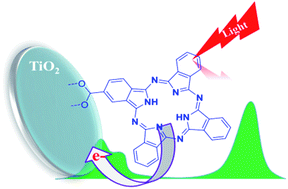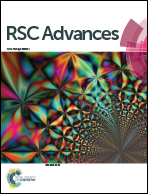Emerging molecular design strategies of unsymmetrical phthalocyanines for dye-sensitized solar cell applications
Abstract
In recent years, dye-sensitized solar cells (DSSCs) have emerged as one of the possible solutions for the global energy crisis. Among the various components of DSSCs, the sensitizer, which harvests solar energy and injects electrons in to the semiconductor layer, plays a crucial role in achieving high efficiency and durability of the cell. To date ruthenium(II) sensitizers exhibit high efficiencies (>11.5%), but they are not so suitable for roof-top/commercial applications mainly because of their limited harvesting capability, expensive ruthenium metal and low durability. In this context, various sensitizers which include porphyrins, phthalocyanines and metal-free organic dye sensitizers have been developed and some of them were found to exhibit enhanced efficiencies compared to classical ruthenium(II) sensitizers. Man-made tetrapyrrolic systems, phthalocyanines (Pcs) have also been studied significantly because of their unique thermal and electronic properties in the red and near-IR regions. Over the years, the efficiency of Pc-based DSSC has improved to 6.1% by synthesizing various Pc derivatives and optimizing fabrication parameters. However, in the present review article, only the recent developments in Pc-based DSSCs have been documented in detail. This review also emphasizes different molecular engineering approaches that the researchers developed for achieving higher efficiency.


 Please wait while we load your content...
Please wait while we load your content...